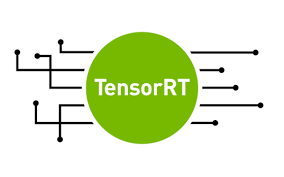
-
完整报错
pycuda._driver.LogicError: explicit_context_dependent failed: invalid device context - no currently active context? -
解决方案
参考:https://forums.developer.nvidia.com/t/how-to-use-tensorrt-by-the-multi-threading-package-of-python/123085/8
利用:
ctx.push()
---
Execute Inference Code
---
ctx.pop()
完整示例:
from PIL import Image
import numpy as np
import tensorrt as trt
import pycuda.autoinit
import pycuda.driver as cuda
import threading
import time
import math
class TRTInference:
def __init__(self, trt_engine_path, trt_engine_datatype, batch_size):
self.cfx = cuda.Device(0).make_context()
stream = cuda.Stream()
TRT_LOGGER = trt.Logger(trt.Logger.INFO)
trt.init_libnvinfer_plugins(TRT_LOGGER, '')
runtime = trt.Runtime(TRT_LOGGER)
# deserialize engine
with open(trt_engine_path, 'rb') as f:
buf = f.read()
engine = runtime.deserialize_cuda_engine(buf)
context = engine.create_execution_context()
# prepare buffer
host_inputs = []
cuda_inputs = []
host_outputs = []
cuda_outputs = []
bindings = []
for binding in engine:
size = trt.volume(engine.get_binding_shape(binding)) * engine.max_batch_size
host_mem = cuda.pagelocked_empty(size, np.float32)
cuda_mem = cuda.mem_alloc(host_mem.nbytes)
bindings.append(int(cuda_mem))
if engine.binding_is_input(binding):
host_inputs.append(host_mem)
cuda_inputs.append(cuda_mem)
else:
host_outputs.append(host_mem)
cuda_outputs.append(cuda_mem)
# store
self.stream = stream
self.context = context
self.engine = engine
self.host_inputs = host_inputs
self.cuda_inputs = cuda_inputs
self.host_outputs = host_outputs
self.cuda_outputs = cuda_outputs
self.bindings = bindings
def infer(self, input_img_path):
threading.Thread.__init__(self)
self.cfx.push()
# restore
stream = self.stream
context = self.context
engine = self.engine
host_inputs = self.host_inputs
cuda_inputs = self.cuda_inputs
host_outputs = self.host_outputs
cuda_outputs = self.cuda_outputs
bindings = self.bindings
# read image
image = 1 - (np.asarray(Image.open(input_img_path), dtype=np.float)/255)
np.copyto(host_inputs[0], image.ravel())
# inference
start_time = time.time()
cuda.memcpy_htod_async(cuda_inputs[0], host_inputs[0], stream)
context.execute_async(bindings=bindings, stream_handle=stream.handle)
cuda.memcpy_dtoh_async(host_outputs[0], cuda_outputs[0], stream)
stream.synchronize()
print("execute times "+str(time.time()-start_time))
# parse output
output = np.array([math.exp(o) for o in host_outputs[0]])
output /= sum(output)
for i in range(len(output)): print("%d: %.2f"%(i,output[i]))
self.cfx.pop()
def destory(self):
self.cfx.pop()











 文章介绍了如何在Python的多线程环境中正确使用TensorRT进行推理,特别是在遇到`pycuda._driver.LogicError:explicit_context_dependentfailed:invaliddevicecontext-nocurrentlyactivecontext`错误时,通过管理CUDA上下文(context)和流(stream)来确保在推断过程中正确切换上下文。
文章介绍了如何在Python的多线程环境中正确使用TensorRT进行推理,特别是在遇到`pycuda._driver.LogicError:explicit_context_dependentfailed:invaliddevicecontext-nocurrentlyactivecontext`错误时,通过管理CUDA上下文(context)和流(stream)来确保在推断过程中正确切换上下文。















 311
311

 被折叠的 条评论
为什么被折叠?
被折叠的 条评论
为什么被折叠?










